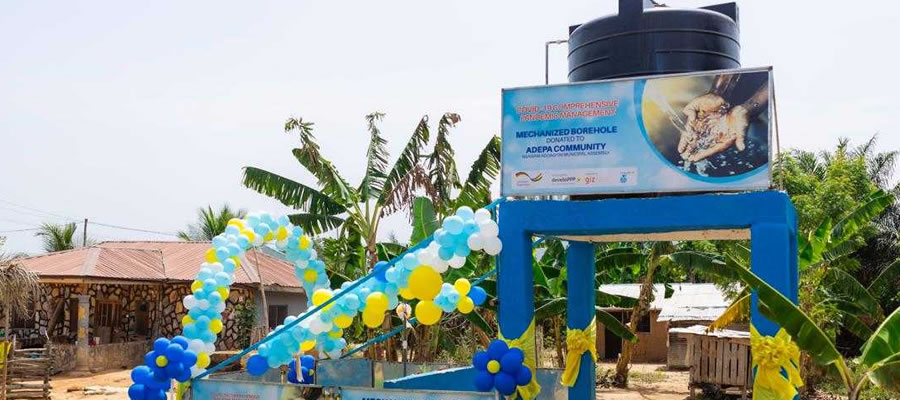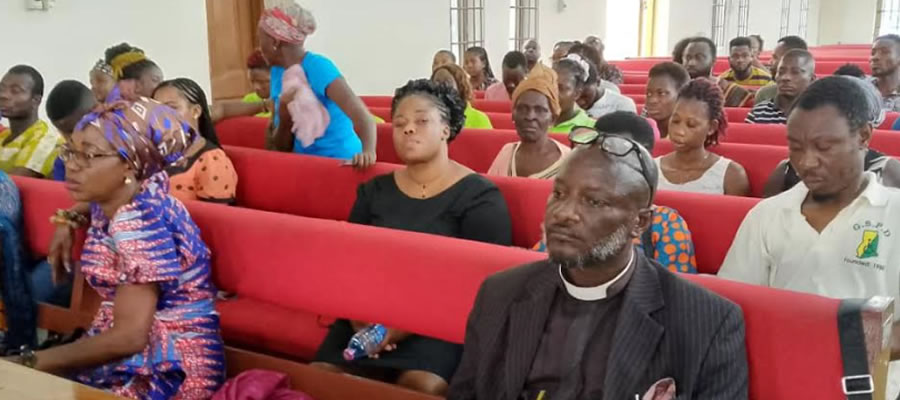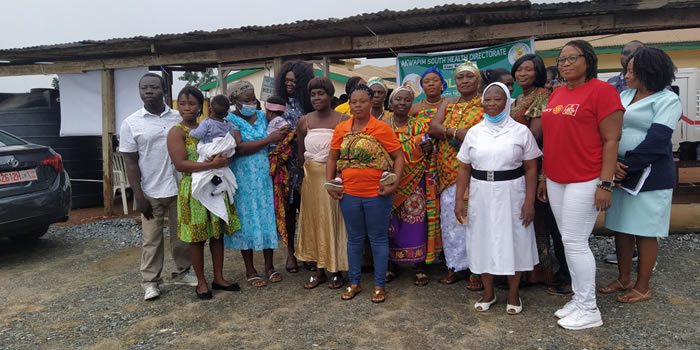

Physical and Natural Environment
Establishment, Location and size
The Akwapim South District is one of the thirty three (33) Assemblies in the Eastern Region of Ghana. It was carved out of the Nsawam Adoagyiri Municipality on 6th February, 2012 under L.I 2040 by Act 1742 with Aburi as the District capital. The District shares common boundaries with the Nsawam/Adoagyiri Municipality to the west, South-East by the Kpone –Katamanso District, to the South by the Ga East Municipality and to the North-East by the Akwapim North Municipality.
Geographically, it lies between latitudes 5.5° N and 5.58°N and longitude 0.0° W. The District has a population of 37,501 and a land size of 224.13km². The strength of Akwapim South District lies in two major identified development areas of comparative advantage. These areas are agricultural and tourism sectors. Therefore, development plans of the Assembly have been geared towards improving the two identified areas with the aim of trickling down development into other sectors.
Aburi, the District capital, is located along the Accra–Koforidua highway. As a result, it is among the busy route centres in Ghana, which provides greater opportunities in the transport and commerce sector for the area. Figure 1.1 is the locational map of Akwapim South District.
Topography, Relief and Drainage
The topography of the District generally is undulating with a general elevation of the land averaging 100-500 meters above sea level, and a peculiar coastal savannah soil, ground water laterite and tropical black earth. The district is a low-lying coastal plain with flatland in the south and rolling plain to the north. About 60% of the total land area lies below 100 feet contour line and rising to cover over 200 feet in the northern parts.
The Densu Plains cover the Western half of the District. The Densu plains are undulating with occasional isolated peaks such as the Amama Hill, which reaches about 5000 feet above sea level, and the Nyanao Hill with a height of about 1000 feet above sea level. The plains constitute a potential for irrigation and mechanized farming in the District. Aburi, the Distrct Capital is located on the plains. Given the Geography, and the inadequate drainage facilities, parts of the town are liable to floods. Pools of stagnant water are also common in the rainy season leading to the breeding of mosquitoes and other vectors.
Nearly all the rivers and streams in the district dry up during the dry season usually December-March. This inhibits farming activities greatly; especially in the area where other clay deposits are known to exist. The Pompom Narrow Lowland is located at the north east. It has an average height of between 150 feet and 200 feet above sea level. There are few isolated hills such as around Pakro, reaching heights of about 1000 feet above sea level.
The Akuapem – Togo Ranges are found to the east of the District. The hills provide a good view of the Accra Plains and are therefore attractive sites for tourism development and for first residential class development. The Akuapem – Togo Ranges in the District form part of the South-East Greenbelt where developments are to be strictly controlled. The District is drained by Densu and its tributaries such as the Ntua, Pompom, Ahumfra and Dobro.
Climate
Weather conditions in the District are generally cool, lying in the wet semi-equatorial climate with a double maxima rainfall recording an average annual rainfall of between 1250mm and 1700mm per annum. The first rainy season is from May to June, with the heaviest rainfall experienced in June and a second rainy season from September to October, accounting for the all year round farming practice of two farming seasons based on rain-fed agriculture.
The highest temperatures averaging 35?C are recorded between March and April. With the lowest average temperature of 23?C recorded in August. This makes the temperature of the district very low and conducive for human habitation thereby serving as a major reason for the urban sprawl into the district with the rich grapping lands at very high prices for development. This development in the long run will have an effect on the existing social amenities in the district as well as can serve as a boster to local economic development
Vegetation
The main ecological zones that can be identified in the District are the semi-deciduous forest and Coastal Savanna Grassland.
The forest covers 60% of the district. Most of the tree species shed their leaves between November and March. Very little of this forest remain today due to uncontrolled exploitation for the timber resources and the shifting cultivation system of farming.
Tree species are mainly of the Antirari-chlroopgroa, such as Aningeria robusta, chrysophyllum Arcanum and Mansonia altissima.
The coastal savanna grassland covers the remaining 40% in the south and forms the transition zone between the costal savanna and rain forest region. It is dominated by Andropogan gayanus and Hyperemia rufa (spean and elephant grass). The vegetation of the district contains various historical sites including the famous Aburi Botenic Gardens.
The Aburi Botenic Garden established by the Basel Missionaries in 1890 contains various species of trees important for asthestic and scientific purposes as well as animals of all kinds, making it the most reservd botanic forest in the sub-region. The Gardens receives on average a little over 35,000 tourist annually from across the globe.
Geology and Soils
The geology of the District is mainly sedimentary rocks metamorphosed to quartzites, schist, shale and philate, forming the Akuapem – Togo ranges. Quarrying activities are taking place at the foot of the ridge to supply aggregates for the construction industry in the District and in Accra.
In the most semi-deciduous forest zone, the principal soil is forest ochrosols. However, the location and relief pattern makes modification to the soil. In the lowlands and valleys, the soil shares enough soil water and tend to be water logged near rivers. At higher altitudes and hillside, the soils are shallow, drier and often story.
Detailed analysis of the soil types, show that there are mainly two types, which are outlined below
Sandy loam and clay soil: It is well-drained but susceptible to draught and erosion due to maximum soil aeration. The vegetation and soil are suitable for cultivation of a variety of crops including cocoa, citrus, oil palm and staple food crops such as plantain, cassava, yam, cocoyam, maize, rice and vegetables.
The district also contributes the production of industrial crops such as cocoa, pineapple, pawpaw and oil palm. Available also are sedative crops such as green pepper and cabbage which are mainly important as export commodity.
Date Created : 11/23/2017 2:07:43 AM











 facebook
facebook
 twitter
twitter
 Youtube
Youtube
 +233 593 831 280
+233 593 831 280 0800 430 430
0800 430 430 GPS: GE-231-4383
GPS: GE-231-4383 info@ghanadistricts.com
info@ghanadistricts.com Box GP1044, Accra, Ghana
Box GP1044, Accra, Ghana